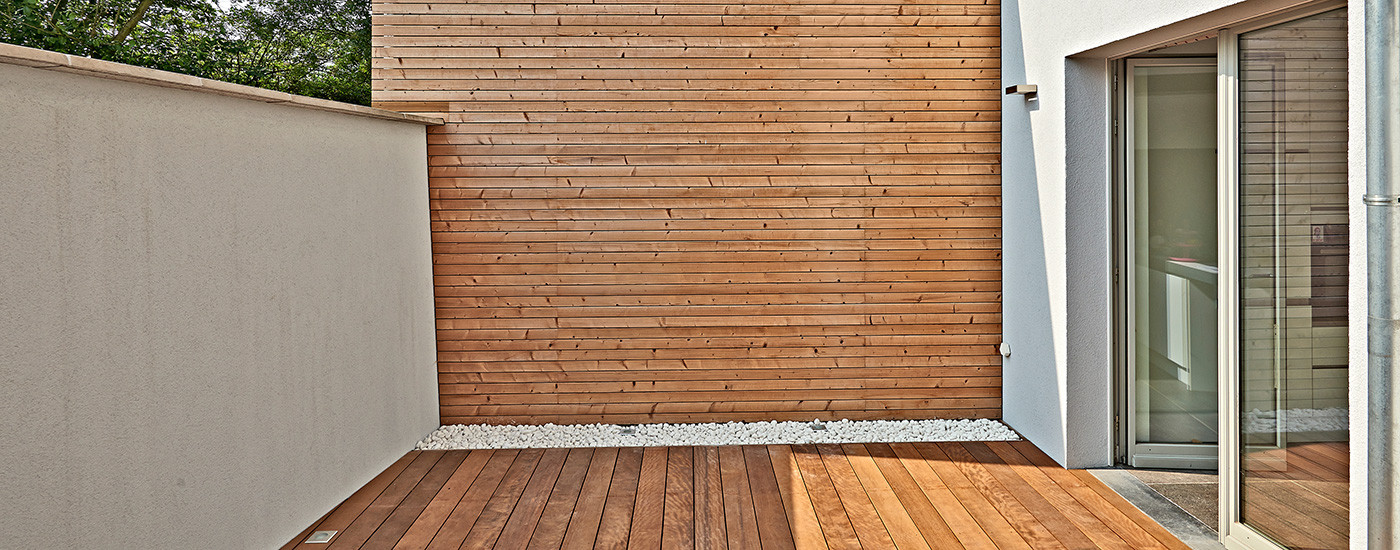Cladding materials are no longer restricted to brick or timber and while these remain the most popular choice for UK homeowners, there are other options.
Composite cladding
Often made up of natural minerals mixed with acrylic polymers, composite cladding is made from the same materials as worktops and is supplied in large sheets. These fixed sheets can be used to improve the appearance to renovated homes, improving insulation at the same time.
Brick cladding
Brick is a perennial favourite when choosing cladding and has been traditionally available in red, brown and yellow. Today, however, brick cladding is available in a monochrome palette which lends itself to contemporary buildings. There has also been a move away from the standard size of brick, moving towards a longer and narrower format.
Stone cladding
More often used on domestic homes rather than commercial properties, stone cladding adds a luxurious and elegant finish to a home. While its high price has led to a glut of simulated stone alternatives, stone cladding will reduce the risk from damp and mildew and is easy to maintain.
Glass cladding
Ideal for the commercial property (think the Gherkin in London), glass cladding adds a distinctive and instantly recognisable look for any exterior, with an extremely modern finish. Glass cladding is relatively lightweight and can be shaped to any contour of a building. The maintenance of cleaning the glass is offset by its ability to maximise natural light – a great advantage to an office block where energy consumption is important.
Metal cladding
Not the most attractive finish, but perfect for industrial units, metal cladding is durable and non-combustible. Once its use is over, metal cladding can be completely recycled too.
Timber cladding
Indisputably the most aesthetically attractive of all types of cladding, timber cladding boards can be fitted horizontally or vertically, according to taste and the desired finish. The organic nature of timber means the cladding will have a totally unique appearance, with no two boards having the same grain or pattern. For eco-conscious homeowners, timber cladding will reduce the household’s carbon footprint thanks to its capacity for heat retention which will reduce the need for central heating. Timber is also both renewable and recyclable, making it the most sustainable and environmentally friendly of all types of cladding.
The benefits of timber cladding
Timber is much easier to work with than many other cladding materials which will let you make faster progress with a project. It can also be cut and shaped, allowing it to be used in intricate designs.
As timber cladding can be installed either vertically or horizontally, it is versatile and gives homeowners more of a choice when deciding on a finish for their property.
For properties in exposed sites, timber cladding will not only resist extreme weather conditions but it will also provide excellent sound and thermal insulation.
At Witham Timber, our timber cladding is available in a choice of profiles – tongue and groove, shiplap and loglap – and has been sourced from renewable, sustainable Scandinavian forests, and pressure treated for longevity.
Our choice of cladding and framing can be viewed in full here and of course, our expert staff is always happy to help with advice on any of your timber requirements. We can be contacted via email at sales@withamtimber.co.uk or by phone on 01205 359188.

